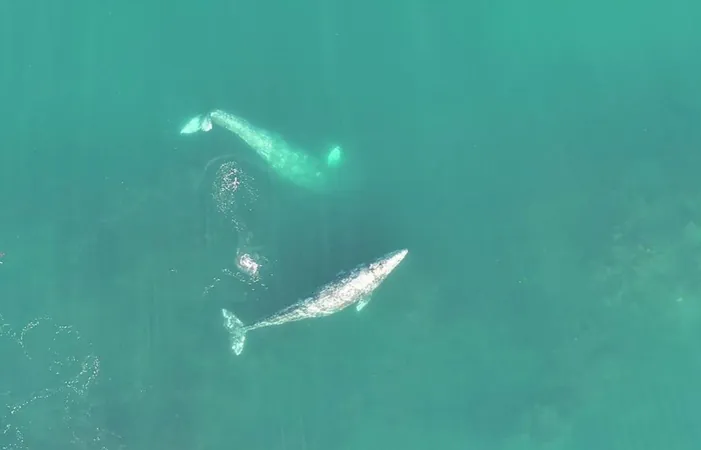
Stunning Drone Footage Reveals Gray Whales' Ingenious Feeding Techniques!
2024-09-25
Introduction
Newly released drone footage from researchers at Oregon State University's Marine Mammal Institute is revolutionizing our understanding of gray whales' remarkable feeding strategies. These captivating aerial shots showcase the agility and acrobatic abilities displayed by gray whales as they forage in the nutrient-rich waters along the Oregon coast.
Groundbreaking Research on Feeding Techniques
Clara Bird, a prominent researcher at the Marine Mammal Institute’s Geospatial Ecology of Marine Megafauna Laboratory, led an extensive seven-year study analyzing the behaviors of these majestic creatures. The study highlights how the whales employ various unique maneuvers—such as forward and side swimming, headstands, and the intriguing technique known as “bubble blasts”—which evolve as the whales mature.
Behavioral Insights Based on Age and Size
Bird's analysis found that younger, smaller gray whales are more inclined to engage in forward swimming during foraging activities. In contrast, larger, older whales exhibit more complex behaviors, such as headstanding—an acrobatic posture where the whale propels itself downward, pushing its mouth into the ocean floor. These findings suggest that certain behaviors require significant physical strength and coordination, which young calves struggle to mimic successfully.
Significance of the Research
The research culminated in two groundbreaking papers, co-authored by Associate Professor Leigh Torres, who oversees the GEMM Lab at the Hatfield Marine Science Center in Newport. The research is particularly critical as it examines the habits of the Pacific Coast Feeding Group—a subgroup consisting of approximately 200 gray whales who prefer to remain along the Pacific Coast during the summer months instead of migrating north to the Arctic. This population is increasingly at risk due to heightened human activity in the region, including boat traffic, noise pollution, and environmental degradation.
Enhancing Our Understanding of Marine Ecosystems
Torres emphasized the incredible journey over the last decade in understanding these aquatic acrobats, remarking, “We have now connected their behaviors with their habitats, sizes, and ages, which enhances our understanding of their feeding habits and movement patterns. This knowledge is essential for implementing effective conservation strategies.”
Environmental Influences on Foraging Behavior
The study also reveals variations in foraging techniques based on environmental factors. Gray whales are more likely to adopt headstanding behavior on reefs, where their preferred prey, mysid shrimp, are abundant. Additionally, researchers investigated the purpose of the elusive “bubble blasts”—a distinctive tactic where whales exhale forcefully underwater, creating circular patterns on the surface.
Redefining Bubble Blasts
Contrary to previous beliefs that bubble blasts primarily helped the whales herd or capture prey, the recent findings suggest this behavior plays a crucial role in regulating buoyancy while foraging in shallow waters. Larger, heavier whales exhibit this behavior more frequently, especially during headstands, and it has been associated with extended dive times, allowing them to feed more efficiently underwater.
Conclusion
As Bird noted, “By studying these whales close to shore in shallow waters, we gain unprecedented insights into their behavior, which is both exciting and rewarding.” This innovative research not only sheds light on the complex social learning behaviors of gray whales but also emphasizes the need for continued protection measures that ensure their survival in habitats increasingly affected by human activity. The breathtaking aerial videos are proof that there’s so much more to learn about these ocean giants!









 Brasil (PT)
Brasil (PT)
 Canada (EN)
Canada (EN)
 Chile (ES)
Chile (ES)
 España (ES)
España (ES)
 France (FR)
France (FR)
 Hong Kong (EN)
Hong Kong (EN)
 Italia (IT)
Italia (IT)
 日本 (JA)
日本 (JA)
 Magyarország (HU)
Magyarország (HU)
 Norge (NO)
Norge (NO)
 Polska (PL)
Polska (PL)
 Schweiz (DE)
Schweiz (DE)
 Singapore (EN)
Singapore (EN)
 Sverige (SV)
Sverige (SV)
 Suomi (FI)
Suomi (FI)
 Türkiye (TR)
Türkiye (TR)